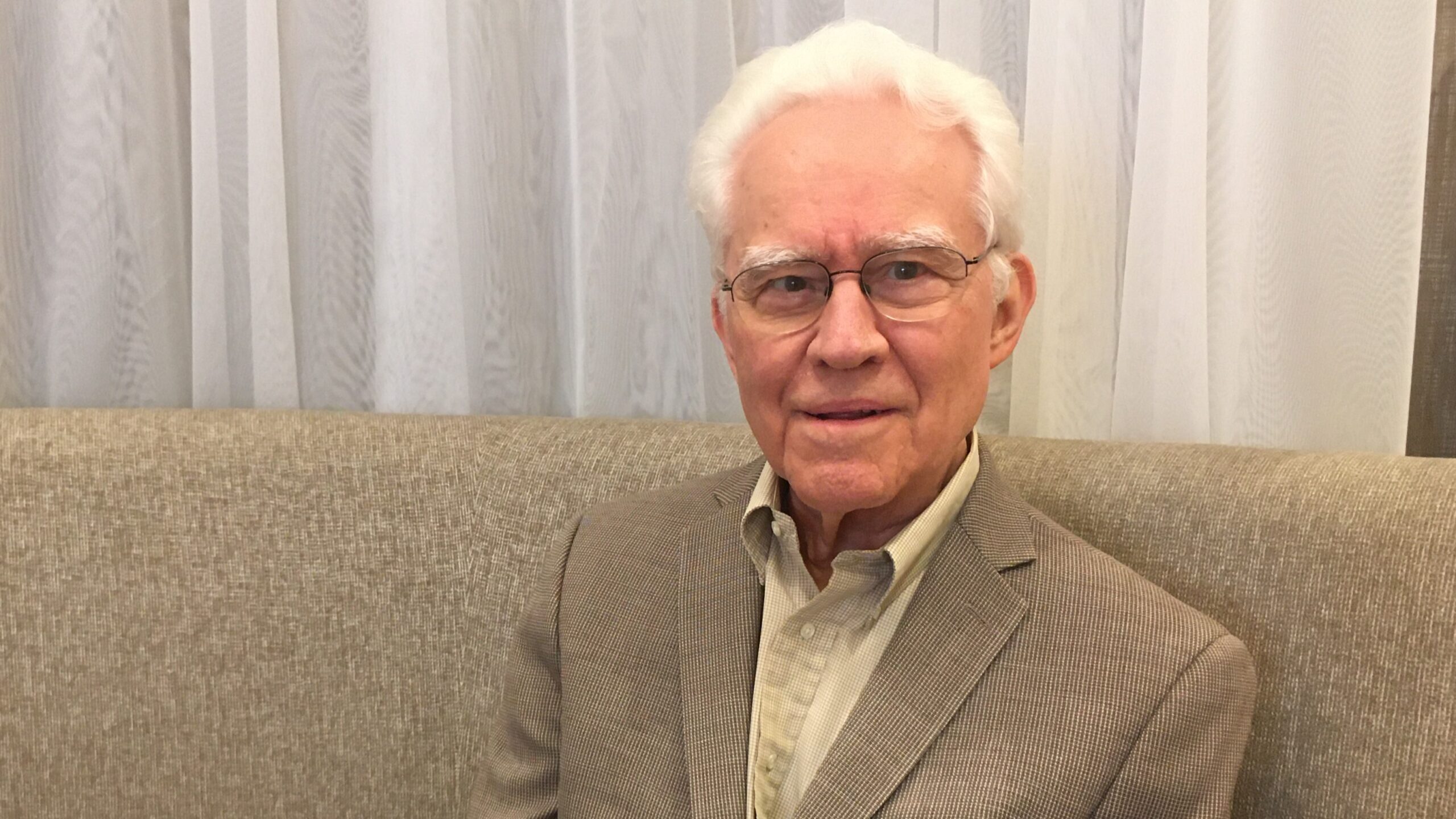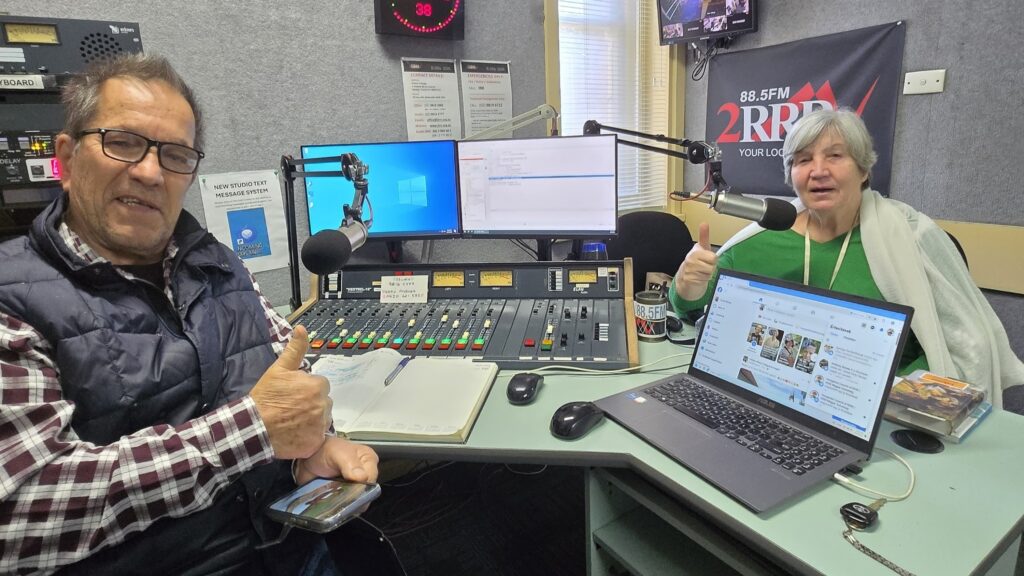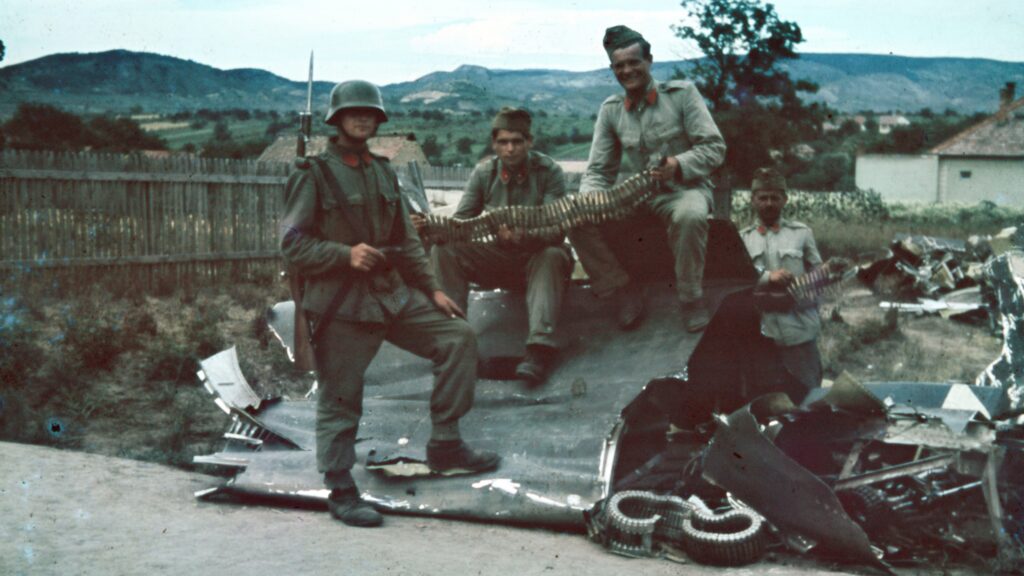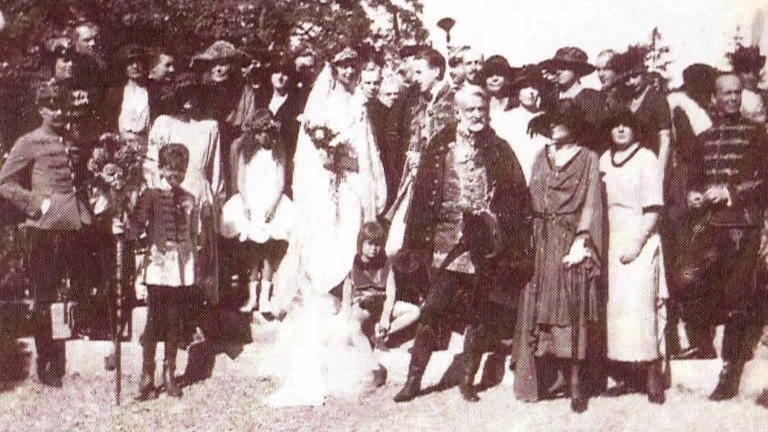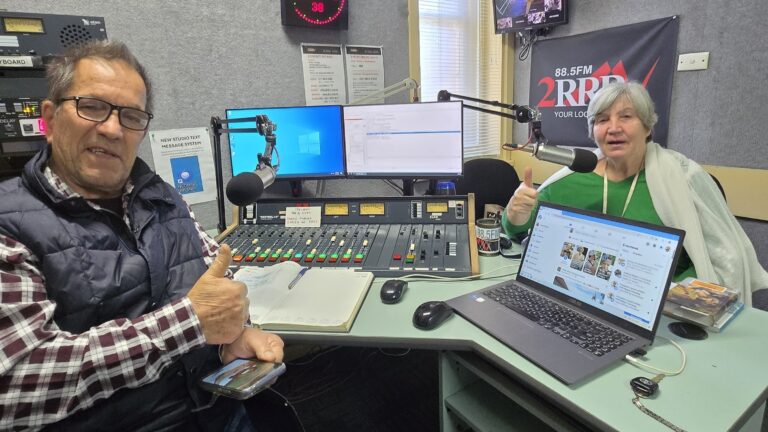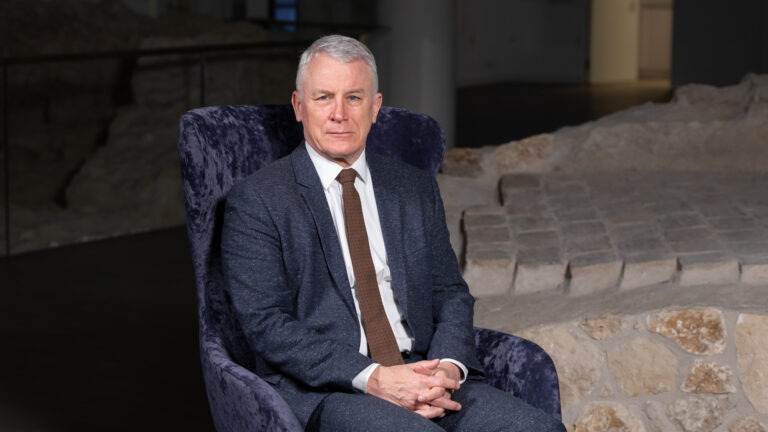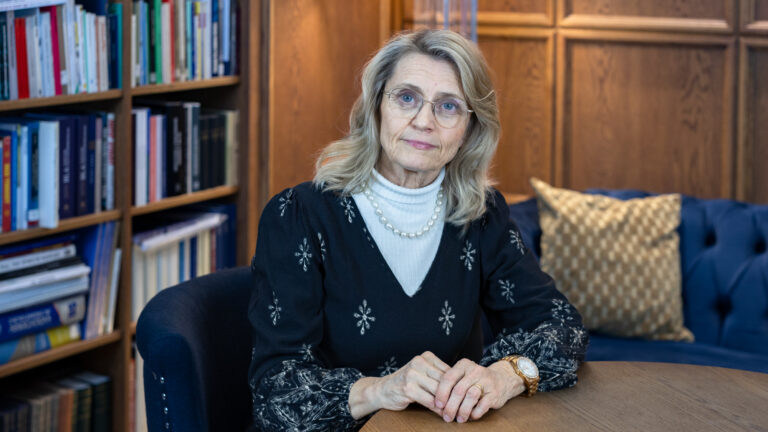This is an abridged version of the original interview first published on 777.hu.
Viktor Fischer is often to be met at Hungarian community events in New York City, and occasionally in New Jersey, too. I first spoke with him at length at his grandchildren’s first communion and then at the Béla Keresztes, Jr. Memorial Athletic Meet founded by him. During these conversations I found out how he came to America at the age of 13 with his parents and how he became, as he puts it, a ‘lifetime scout’.
***
Arrival in America and Scouting in New York
Viktor’s parents lived in Pétfürdő, in Veszprém County of Hungary when he was born in December, 1938. The local factory became a prime military target, and they had to leave the village in 1944 because of the heavy bombing, however. They remained in Hungary until April 1945. His father had been a soldier in World War I, spent four years in Russian captivity, where he gained first-hand experience of communism. This situation led Viktor’s parents to decide to flee. They had an adventurous journey. Eleven families from Pétfürdő left the Hungarian border in a caravan of four trucks, but in the Austrian town of Spittal, the truck carrying the Fischer family’s belongings was hit during an American air raid and burned down. They could only save the partially burned family documents from the ashes, then continued their way towards Bavaria. At the heavily bombed Lindau railway station, they lived in a railroad car for about 3-4 weeks, sleeping on benches, and after that in the attic of a local farmer’s house.
In Lindau, his father established a small toy-making company, making cut-out cardboard houses. After it went bankrupt during the economic crisis of ‘48, he worked as a cartographer for the French government. At that time, Lindau am Bodensee had no first grade in the local school, so Viktor was enrolled in second grade, without any knowledge of German. His parents helped him overcome the initial language barrier. Later, they moved to Offenburg, Baden, and from there they left for New York in November 1951. They were given an apartment in the ‘Hungarian Neighborhood’ of Yorkville, on the Upper East Side (which had a significant Hungarian and German population in the mid-20th century). Viktor was enrolled in the third grade at the St. Stephen of Hungary’s Parish School, a month later transferred to fourth grade, and by the end of the year he completed the seventh. He spoke German quite well, but still didn’t speak English. Viktor continued: ‘There were so many Hungarians living there at the time that a knowledge of English was not needed. Any shop in the neighborhood (shoemaker, barber, pharmacist, confectioner, restaurant, etc.) with the person serving you, or the owner, or both, were Hungarians. After the Revolution of ’56, another wave of immigrants arrived, and then later, during the 70s and 80s, mostly Transylvanian Hungarians came. After the Central European regime changes in 1989–90, Hungarian immigration to the U.S. declined, while the first generation of those who arrived during the 40s–50s died, moved away, or assimilated. After the regime change in 1990, many moved back to Hungary.
‘Those who immigrated after the fall of communism arrived with a completely different purpose and mentality than the so-called ‘DPs’ (displaced persons). My parents didn’t want to leave Hungary at the time and waited for a long time to be able to return. But years of living in the States integrated those immigrants into American society. Nonetheless, we always spoke Hungarian in the family. I owe my language skills mainly to this, and also to scouting. Even my vocation.’
In October 1951, Zoltán Vasvári, a.k.a. ‘Zolibá’, a former Hungarian military officer, gathered the sons of many Hungarian families in his New York apartment to introduce them to Hungarian scouting. Viktor joined the first patrol in the spring of 1952, and, as he said, ‘the scout bug has remained’ in him ever since. ‘Vasvári was a man with a deep patriotic feeling for Hungary, who could really inspire children—and that’s what appealed to me. Due to his military background, there was a lot of marching and formal training in scouting that impressed us. But the hikes and scout camps were especially attractive.’ The Turul patrol developed rapidly; their first public appearance was the commemoration of the martyrs of Arad, on October 6, 1951. In 1955, the St. Emeric Hungarian American Youth Association, established by then Scoutmaster Vasvári and other enthusiastic Hungarians, offered them a home, and in 1967 they received a permanent room in the Hungarian House of New York, where they have been meeting ever since.
The first scout trip was organized in the autumn of 1952 to a holiday resort in New Jersey named ‘Bugaci Puszta’ (after a well-known part of the Great Plains region of Hungary). In 1953, the scoutmaster sent three leadership candidates to the Central Leadership Training camp, including Viktor. Within a short time, the patrol had reached the required headcount of twelve and became a fully registered troop. The first official meeting took place on January 24, 1954, the day the troop was officially founded. It was joined earlier by Péter Mauksch, who had been a scout in Hungary before scouting was banned by the Communist authorities in 1948, where he was a member of the Gusztáv Erős Boy Scout Troop No. 7 of Buda. At his request, the Hungarian Scout Association in Exteris (KMCSSZ in Hungarian) gave the New York troop the same number and name—and it is currently the only Hungarian troop in the KMCSSZ having the same number and name of the former troop that functioned in Hungary. In 1960, the Dorottya Kanizsay Girl Scout Troop No. 46 was formed, but it proved to be short-lived. It was formed again in 1966 and has been operating under the name Kata Bánffy ever since. In 1969, the troop came under the leadership of Judit Kesserű, who had moved to New York from Argentina. She later became the wife of the late KMCSSZ President Dr. György Némethy and is currently working on writing the history of the KMCSSZ from 1956 to 1996.
Hungarian Education and Service to the Community
The various waves of Hungarian immigrants are reflected in the Hungarian scout movement in North America (and elsewhere), since at the outset, the children of refugees formed the backbone of the troops. Nowadays, many troop members come from mixed-language families, but Hungarian language skills remain a basic requirement for admission. Similar to other scout leaders, Viktor also stressed the fact that it is important that the scouts participate in regularly organized activities with their peers and use the Hungarian language. In the beginning, he recalls, ‘two people were mostly responsible for nurturing Hungarian culture within the New York scout troops: the late Péter Mauksch, and the late Károly Andreánszky, who had a lion’s share not only in the development of teaching about folk culture, but also in the study of our ethnography, as a complement to the core scouting curriculum.’ In 1958, an independent folk-dance group was formed mainly in collaboration with the scout troop leaders.
In 1963, Viktor took over the troop leadership from Zolibá. Scout leaders established the Hungarian weekend school in the classrooms of the St. Stephen of Hungary Roman Catholic Parish. (The Parish closed its doors in 2015). For the first fifteen years or so, scout leaders made up the majority of the teaching staff and some of its principals; subsequently, the teaching staff was made up mostly of trained teachers who had immigrated from Hungary. In 1963, the first poetry recitation competition was also organized by the troop with Viktor’s assistance, and thereafter for several years by the Hungarian school. The relationship between the two scout troops and the Arany János Hungarian School and Kindergarten of New York is still strong and collaborative.
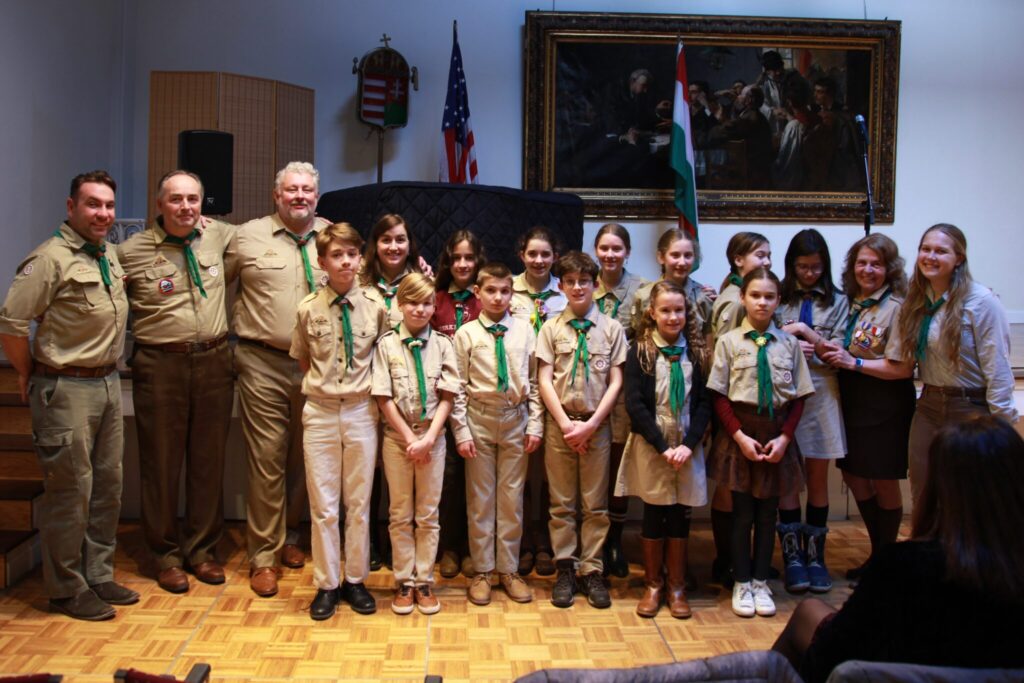
New York Troop No. 7 was instrumental in the integration of the ’56ers. As a service to the Hungarian community, they often performed folk songs, folk dances, recorded presentations and skits at a variety of venues, both for American and Hungarian audiences, primarily for charity purposes. In 1972, the girls’ troop staged a folk-dance performance for the benefit of the flood victims in Transylvania. The troop leaders also participated in various ways in the organization of the Hungarian Charity Balls held in New York and assisted in the organization of the still existing Scout Ball, especially in the early years. In 1998, on the occasion of the 150th anniversary of the 1848 War of Independence, the March 15 commemoration held at the Kossuth Statue was mainly organized by the scout leaders. In time, many of the adult scouts had become involved in Hungarian public life, in the establishment and management of Hungarian organizations, such as the Hungarian House of New York.
New Circumstances and Challenges
KMCSSZ has a dual function, as it also serves as a preserver of the Hungarian identity of the children, unlike the Scout Association in Hungary, where the Hungarian background is given. Along with its responsibilities for scouting programs, KMCSSZ is entrusted with the nurturing of Hungarian culture—also a huge challenge, according to Viktor. ‘Not everyone understands this, even in Hungary, and those who’ve never been scouts, even less. Educators better understand the importance of character building. I became a teacher, because I felt I had a knack for it and wanted to contribute to children’s education. If I hadn’t become a scout, I probably wouldn’t have become a teacher’, he explains.
In regard to special local challenges, New York City has always been a ‘gateway’, where Hungarian immigrants typically didn’t stay for long; as soon as their financial circumstances allowed, they moved on. Therefore, apart from the initial ‘Hungarian times’ in the 50s and 60s, it was constantly difficult to maintain a stable community there. Nowadays, everyone brings their children from far away to Hungarian school on Saturday mornings and to scouting activities in the afternoons, sometimes traveling an hour or more. On Sundays, many people no longer want to drive to the city again for church services, preferring to attend one nearby their residence—if at all. While relations with Hungarian organizations, especially the Hungarian school, have been basically good and stable, relations with the church have been somewhat shaky. One of the reasons for the latter, apart from the initial reticence of the churches, is that not everyone is happy with the liveliness of the scouts, while using the church auditorium and its adjacent rooms. Also significant is the change in the attitude of today’s parents towards faith and church—there is an obvious decline everywhere. ‘If parents are so alienated from the church, you can’t convince them of the importance of faith. Today in New York, parents are mostly new immigrants whose (grand)parents were raised under communism and are typically alienated from the church, and religion in particular.’ It’s therefore a significant achievement that after a hiatus of more than ten years, a Hungarian first communion took place in New York City this year. Six children participating were scouts and the seventh will be a scout in the autumn.
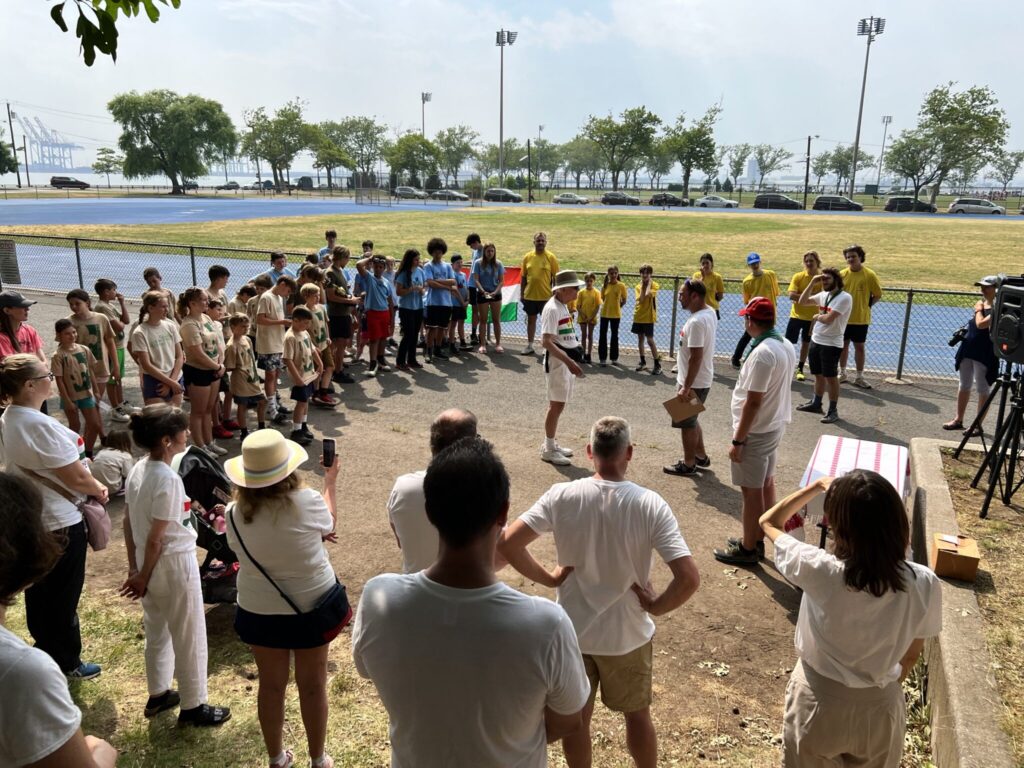
Sports, Poetry and Music
When asked about the roots of his love of sports, Viktor smiled and replied that it all started in Germany. At the age of 11, when he was a first-year pupil in the ‘Gymnasium’, the physical education teacher took the class to the local athletic field. That was an experience that launched his lifelong love of sports, especially athletics. In 1953, as a freshman patrol leader, Viktor took the scouts to Central Park and organized a track and field meet. Two years later, he organized an athletic competition at the New York district scout camp. In the following year, as one of the young leaders of Troop No. 7, he organized a competition in a Bronx athletic field, inviting the troops from nearby New Jersey. Since 1960, he has been organizing it as a district competition, which in 1968 took on its current name after the late Béla Keresztes, Jr., a promising young scout leader, who lost his life in an unfortunate accident in 1966.
‘The competition is held on the second Sunday of each June, on an athletic field in New Jersey. The competitors are mainly from the New Jersey and New York area’s scout troops. This is still the only regular athletic competition for Hungarian youth abroad, and its main aim is to raise interest in athletics among the scouts. It’s an opportunity for noble competition between teams and for making friends; therefore, we don’t aim for top performances, but to develop the versatility of our scouts. Regular sports are part of the scouting experience anyway’, explained Viktor. The events include a triathlon (run, jump, throw), a 400-meter dash for girls, a 1-mile run for boys (and adults) and a 4×100 m relay for troop teams. The troops compete for a trophy, which is awarded permanently after three consecutive annual wins. The competition is assisted by nearly 40 judges and organizers, including scout leaders and parents.
After a three-year hiatus due to the Covid pandemic, the event was again organized in June 2023, with 77 participants. The competition begins and ends with prayer, and the competing teams and team members (accompanied by their leaders and parents) cheer each other and their teams in a sincere, friendly manner. The 2023 competition was special, because District Commissioner Tom Schachinger paid a special tribute to Viktor on the occasion of the 70th anniversary of the competition. He modestly commented: ‘I still assist in running the track events, being the secretary, and also help organizing, but Gábor Salopek from New Brunswick has been running it for the last ten years. He is well suited for the position.’ Prof. Judit Kerekes, lately the regular announcer, assists both at the athletic and poetry competitions.
The first poetry recitation competition in the New York Scout District was held in 1963, at the initiative of the New York Scouts Troop No. 7, and Viktor. Twenty years later, in 1983, Viktor organized it again in New York City, with seven competing troops. Since 2004, it has been held regularly once every two years, at varying venues in six cities of the district, last year in New York City, next year in Wallingford, Connecticut. (The New York District includes seven cities with functioning Hungarian scout troops from Boston to Sarasota, Florida.) In 2012, the competition was named after Tibor Cseh, because of his knowledge and lion’s share in spreading Hungarian culture, especially literature, first in Brazil, then in the New York area.
Today, the competition still starts with a semi-final within each scout troop of the district, in four age groups, where the scouts compete with one compulsory and one optional poem. The compulsory poems are chosen by a team of about 8–10 competent literary experts. In the evaluating the competitors, equal weight is given to performance (movement, facial expressions, gestures, posture), comprehension (precise knowledge of the text), pronunciation and stress (using meaningful Hungarian speech, and understanding of the poem), and emotionality of delivery (whether they ‘run through’ the poem or ‘live’ it). Most of the participants were born abroad or left Hungary at a very young age, but there are also some whose parents were born in the U.S. Some participants even come from mixed-language families, giving the event more significance. In a recent competition, the oldest participant was a 50-year-old scout whose child also recited.
‘All this indicates an attachment of these families to the Hungarian language and culture, and to their Hungarian identity. The children are therefore to be commended for having taken the initiative to recite poems, even if it was with a little encouragement by their parents and teachers, scout leaders, and all those who helped them prepare. The aim of the recitation competition is not only to introduce young people to poetry, but also to awaken the competitors’, their parents’, and the public’s interest in Hungarian literature. We recommend that every scout should learn two poems, regardless of whether they take part in the competition or not, and this should be encouraged by their parents’, Viktor explains, noting that he is the head of the five-person jury, which occasionally includes Ildikó Nagy, director of the Hungarian House in New York; poetry enthusiast dr. István Horváth and Éva Kovács, both educators and scouts from New Brunswick; educator dr. Éva Balogh Kovács from Boston; and in the past, the eponym’s widow, Anna (Nusi) Cseh.
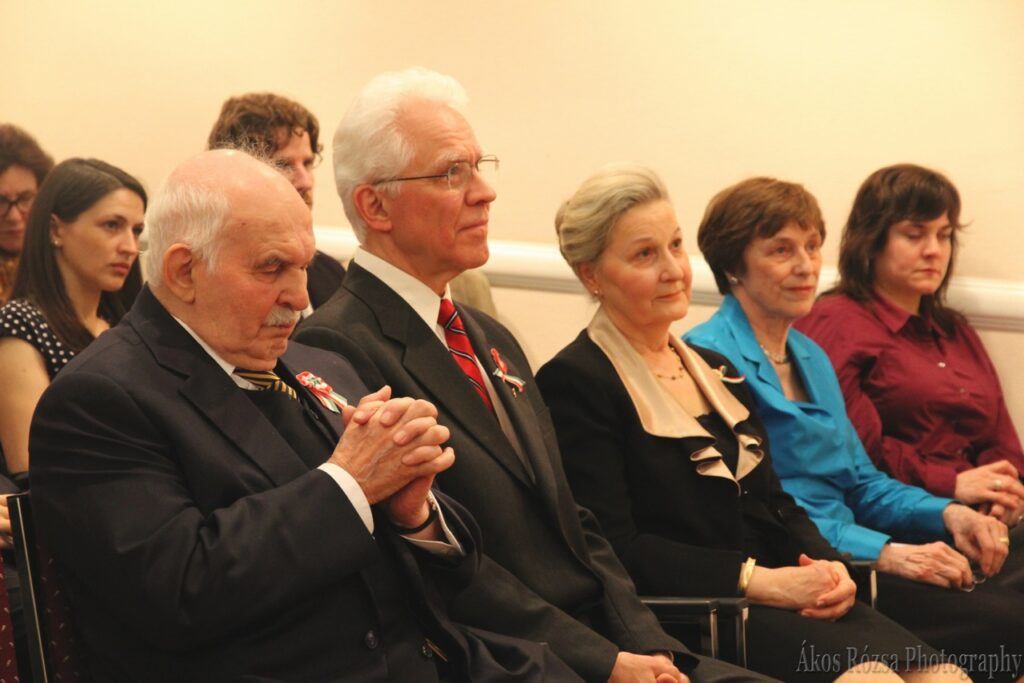
Viktor revealed that besides his love of sports and poetry, he has another passion: Hungarian folk music. He was a recorder teacher for years at the annual Kodály Weekends (a Hungarian folklore scout event), held in New Brunswick. The program was started in 2004 by Györgyi Gyulassyné Hites, a former scout leader in San Francisco, after she moved to New York with her family. She is also a versatile traditionalist in folk music and ceramics. Viktor learned to play the recorder in scouting, and he even joined a recorder club and taught it at regös (folk tradition) events. ‘I come from a musical family: my father learned to play the piano from a teacher who himself learned from the world-famous Hungarian composer Ferenc Liszt. My mother also played the piano. I was enrolled in piano lessons as a child for two years in Germany, but then we ran out of money and I had to give it up. Of my sons, Zoltán played the clarinet; Endre used to play the clarinet and now the violin, while Miklós plays the guitar. Both Zoltán and Endre were selected for the county school orchestra as high school students, which is a significant event in New York State schools. Zoltán still composes today.’
A Family of Scouts
The family members of Viktor’s wife, Judith Domonkos, were also World War II refugees. Her father was an army officer. They settled near Youngstown, Ohio. Viktor first met Judith at a gathering in 1957 at a Gettysburg, Pennsylvania event, to which a large Hungarian crowd arrived from many different locations, for the unveiling of a Hungarian artist’s painting of President Eisenhower. Viktor, as an 18-year-old Boy Scout Leader, met three girls in decorative Hungarian dress, introduced himself to them, including the then 15-year-old Jutka, who had already heard of him, because her brother had brought home a photo of Viktor from the previous year’s Jubilee Scout Camp. She sent him a letter and a 400-mile long-distance relationship began. After an introduction to her family, the correspondence and phone calls continued, they met occasionally at scout camps and finally, after both had graduated from the university—nine years after their first meeting—they married. The wedding took place in the Hungarian church of Sharon, Pennsylvania, after which they moved to New York. ‘If I had to marry again, I would marry the same woman’, Viktor blushes. Judith was an Art teacher before their sons were born and stayed at home with them afterwards. Viktor taught mathematics for 35 years in a suburban public school, where he also founded a table tennis club 50 years ago and organized school competitions, which he continues even after his retirement, because ‘the contact with the students keeps me young’. He considers it a lifelong sport: he still goes to an adult club to play it once a week.
Their sons also joined scouting. Although they did not attend Hungarian school, he and his wife taught Hungarian to their children at home, so they all read, write and speak the language. Zoltán is a chiropractor, lives with his wife Jeannie, and their four children. Miklós is a self-employed computer-aided architectural and motion graphics designer and lives in New York with Lynn, whom he met at Carnegie Mellon University. Endre is a violin maker (luthier) who previously lived and studied in Hungary for five years and earned his stringed instrument-making degree at the Liszt Ferenc Music Academy. He met his wife Melinda in Hungary, who is from the Gyimes region of Transylvania. They also live in the New York area with their two children, Endre and Ilonka, who are scouts and recently received their first communion.
When asked about future plans Viktor revealed that he wishes to remain the editor-in-chief of Leaders’ Magazine, an official publication of KMCSSZ, and is planning to publish the history of Hungarian Scouting in New York City, as well as that of the New York District athletic competitions. He laughed cheerfully: ‘My wife keeps asking me: when will I stop? I’ve got to look after the grandchildren and attend family events. But if family matters go well, scouting must still fit into my life.’
Related articles:

